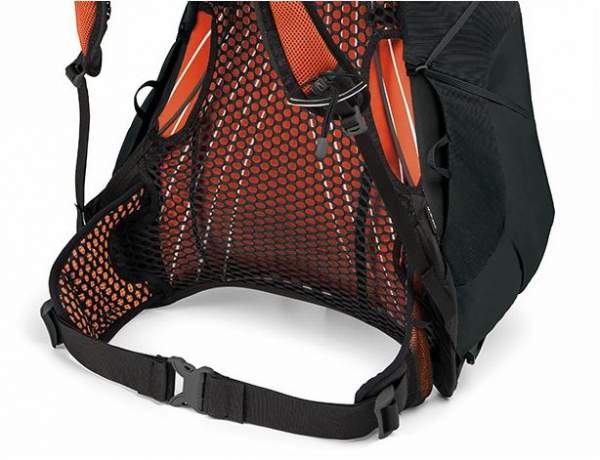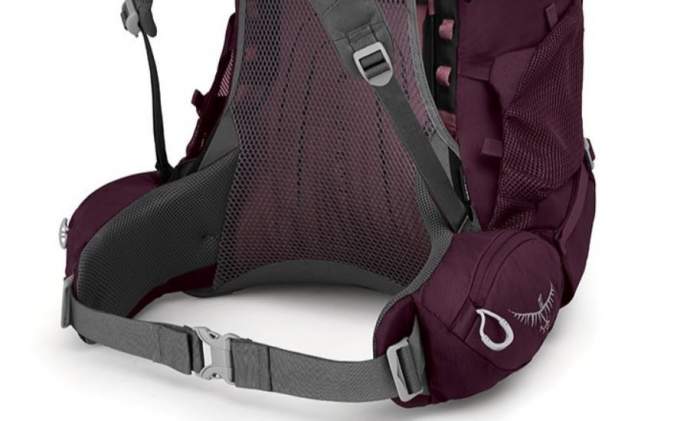Here you have a comparison Osprey Rook & Renn vs Osprey Exos & Eja backpacks. These series are built to be affordable and ultra-light, so some features are missing. Read more below.

Why this comparison
Osprey has launched a completely new series, the Rook & Renn for men and women, respectively. Those are very affordable packs, at least for such an outstanding brand. They are also lightweight packs, with a very good volume/weight ratio, but some features are missing. As usual.
On the other hand, they have also launched a new Eja series for women, which corresponds to their Exos series for men that has been around for many years already. But the Exos packs have been heavily modified and they share the same basic features as the Eja packs. Not all changes are for the better, at least from my point of view. But these packs are built to be ultra-lightweight. When they appeared on the market, I wrote a text about this and it is available here.
So, on one side you have an effort to build affordable packs, while on the other side to build exceptionally lightweight packs. The result in both cases is as expected – some features are missing. The question is where this lack of features is more substantial. The answer is below.
A few details about Exos & Eja and Rook & Renn packs
Sizes
The Eja packs come in the following sizes Eja 38, Eja 48, and Eja 58 liters. The Exos packs are also in the sizes 38, 48, 58 liters.
Within each of these nominal sizes, you have 3 sub-sizes. You will see this as S, M, and L sizes for men and XS, S, and M sizes in the Eja packs. So these are large series with many packs, 9 sizes in total for each of them. Now, the reason for such sizes is that the torso length is fixed in these packs, so apart from the fine-tuning with shoulder straps, you have to choose a proper sub-size within each of these nominal sizes.
But how is this in the Rook & Renn packs? Well, here you have two sizes for each of them, Rook 50 and Rook 65 liters, and also Renn 50 and Renn 65 liters. But here you have a completely adjustable shoulder harness (torso size) so there is no need for such sub-sizes.
Other basic features
I have decided to show the Renn 65 and Eja 58 packs as the representatives of the series. This will be enough to get some idea about the main features. The same basic comparison would be in the Rook vs Exos packs.
Volume/Weight ratio, liters/kg
Adjustable torso
Access
Hip belt pockets
Rain cover
Metal frame
Bottom compartment
Pockets
Removable lid
Back panel
Price, $
Osprey
Renn 65
42
yes
top, bottom
yes
yes
yes
yes
5
no
trampoline
$$
Osprey
Eja 58
49
no
top
no
no
yes
no
5
yes
trampoline
$$$
So which is better
Here is my summary:
Shoulder harness
Hip belt
Ventilation
Weight
Pockets
Attachment elements
Access
Organization
Carry load
Fabric
Rook & Renn
Exos & Eja
You might want to know my reasons and explanation for the rating in the table, so here they are:
Regarding the shoulder harness: The Rook & Renn series have a fully adjustable shoulder harness and this includes the following:
- Adjustable torso length.
- Two different attachment positions for the load lifters.
None of these is available in the Exos & Eja series, hence my rating. Also, you have a full padding on the Rook & Renn packs while the Exos & Eja have a very thin but really cool looking padding on the shoulder straps.
Hip belt: The Rook & Renn are with a fully padded hip belt and this is not so in the Exos & Eja packs where you have only very short flaps on the hip bones with just a bit of thin padding. In my view this is where Rook & Renn beat them totally. To understand what I mean, please see the hip belt in the Exos and Eja packs:

Now see how this is with the hip belt in the Renn 50 pack, this is beyond comparison:

Ventilation: This is excellent in both series, and I am pretty sure there is nothing better on the market. It is completely on the level of Deuter Futura Vario packs.
Why am I mentioning Deuter here? The reason is simple, Deuter has invented this tensioned mesh system and introduced in their Futura series several decades ago. I have been carrying their packs with such a design in the past 20 years. Nowadays more and more brands are switching to this concept, and this is with all good reasons.
Weight: Obviously, Exos & Eja packs are ultra-lightweight so they are clear winners here.
Pockets: This is interesting to compare. Both series have the same number, but they are differently organized. See what I mean:
- In the Rook & Renn you have 2 hip belt pockets, 2 side pockets, and 1 lid pocket.
- In the Exos & Eja there are no hip belt pockets (there is no place on those minimal hip flaps), but you have 2 side pockets, 2 lid pockets, and 1 front pocket. Note that the front stretch pocket here is gigantic so this is a very useful space.
Now, this is the matter of preference, it depends which combination you find more useful. I give them the same rating here, but the Exos & Eja offer more with their pockets.
One addition: the Rook & Renn packs have one extra pocket on the bottom where the rain cover comes, but you can use it as you wish.
Attachment elements: I shall not list here what the same is in both series, I shall focus on the differences only.
- So in the Exos & Eja you have Osprey’s famous Stow-on-the-Go attachment for poles, and this is missing in the Rook & Renn.
- In the Exos & Eja you have a loop for the ice axe, paired with a bungee tie-off higher on the pack. This is missing in the Rook & Renn.
- There are more webbing loops on the Exos & Eja packs.
Access: You can access the Rook & Renn from the top and from the bottom. Only top access is in the Exos & Eja packs.
Organization: Here I mean mainly the bottom compartment and the mentioned extra access in the Rook & Renn packs. This is missing in the Exos & Eja packs.
Carry load: I have no doubt that from this point of view the Rook & Renn packs are far better, they come with a fully padded hip belt. The hip belt in the Exos & Eja packs is almost without any padding and the same is on the shoulder straps.
Fabric: You have 600D polyester in the Rook & Renn, while in the Exos & Eja you have 100D high tenacity nylon triple check dobby, and the bottom is 210D high tenacity nylon.
Extras: The rain cover in the Rook & Renn adds value. The rain cover is important for me, would not go without it in the area where I do my mountaineering tours.
Final thoughts
So this was my comparison Osprey Rook & Renn vs Osprey Exos & Eja backpacks, I have presented some basic facts and how I see these four series. There is no doubt that Rook and Renn are better backpacks. They are lightweight and some features are missing but nothing is sacrificed in their suspension.
The suspension is essential, the main purpose of a backpack is to carry the weight. In the case of Exos packs, the hip belt in the previous version was far better, although they have introduced a great ventilation panel in the new version.
What do you think? Do share your opinion, there is a comment box below.
Artagh says
Great comparison!
You just confirmed that weight isn’t everything. And to be honest: about 1,5kg ain’t very heavy at all, especially for this size.
So I’ll buy the Rook instead of the Exos 🙂
Jovo says
Thank you Artagh. I am sure you made a good decision.
Rob Giles says
Brilliant, thanks was considering both will now buy the rook 50L
Jovo says
Many thanks Rob for the kind words. I hope you will be satisfied with your new pack.